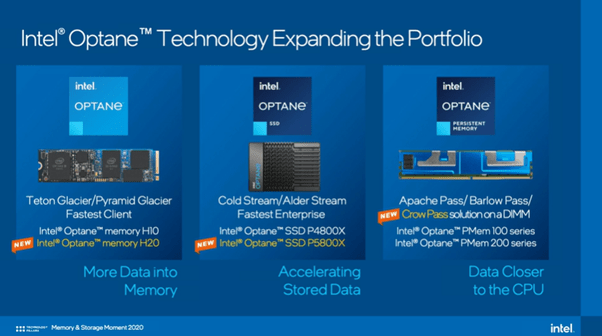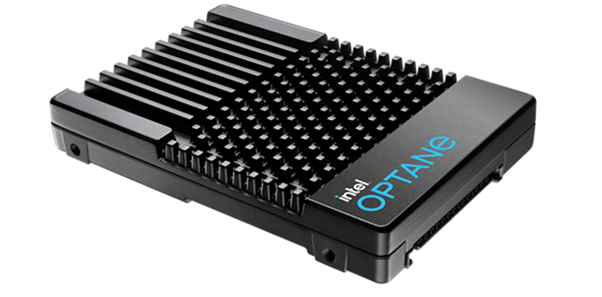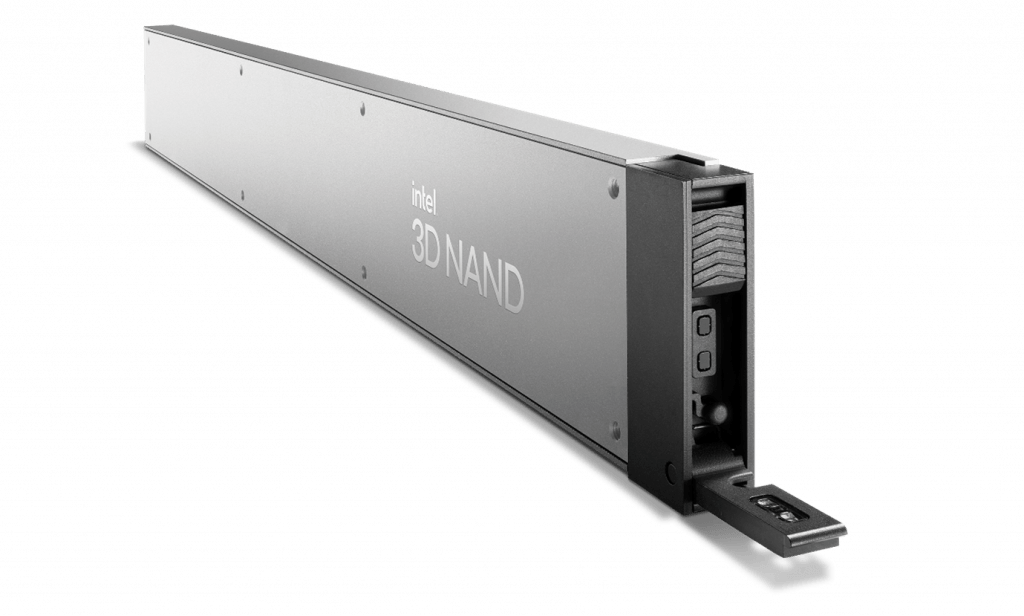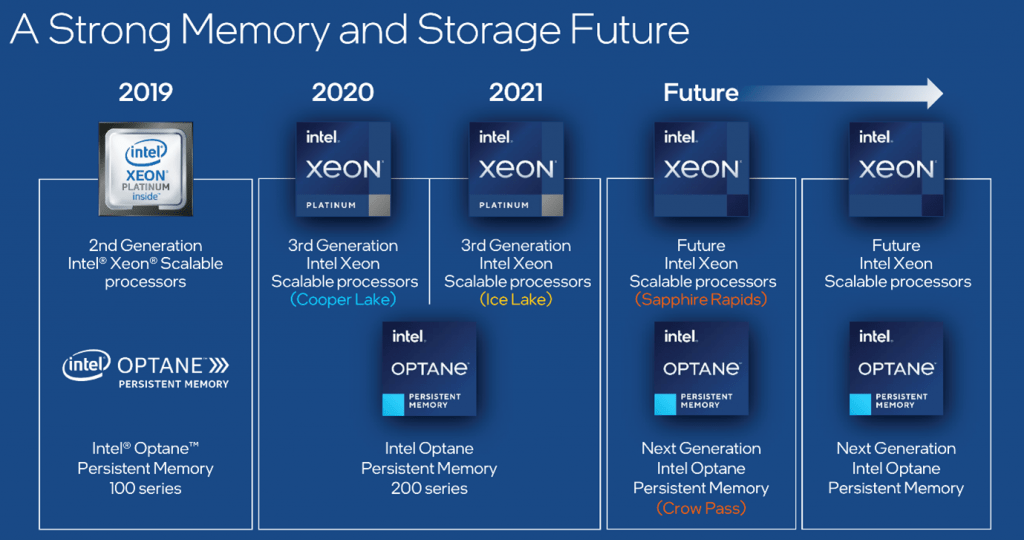I am lucky to be part of the Tech Field Day team that was invited this week to attend the preview of the Intel Memory & Storage Moment.
During the various presentations a new wave of Intel Optane and NAND SSDs were announced, where Intel claims 2020 has been the year of impact and change. They say memory and storage is one the most rapidly evolving areas of technology these days. They want to be ready for the future with this new line up.

So what was announced…
Datacentre
For me the most impressive announcement in the datacentre area was the Intel Optane SSD P5800X.
It is not that long ago that storage vendors were announcing their storage arrays delivering more than 1 million IOPS. Well today Intel announces an SSD drive that can deliver as well 1 million IOPS. Yes just one drive, not an array…

The P5800X (codename Alder Stream) is the first product to use second-generation 3D XPoint memory, and it also features an updated controller to support PCIe 4.0.
Performance numbers are pushing the limits of the PCIe 4.0 x4 interface, which has a theoretical maximum bandwidth of 8GB/s. The numbers for the P5800X are close to this with read and write speeds of 7.2 GB/s and 6.2GB/s. We just need the next gen Xeon processors that will support PCIe 4.0, Intel is working hard on that with Ice Lake and Sapphire Rapids…
Also latency got better, where Intel claims it would be less than 6 microseconds. This is 60% better compared to the current P4800X.
The new P5800X increases write endurance to 100 DWPD. As a comparison the first-generation Optane DC P4800X launched with a 30 DWPD write endurance rating, later increased to 60 DWPD.
Planned capacities of this new drive will be from 400GB up to 3,2TB.

The second drive that was announced in the datacentre space is the 2nd generation QLC SSD D5-P5316. It uses the new 144 layer QLC NAND technology which doubles the capacity of the drive (up to 30.72TB!), doubles the read bandwidth and doubles the endurance versus the current 64L QLC models.
Client

On the consumer side we see the 144L QLC NAND technology appearing as well with the new 670P NVMe SSD, replacing the current 660p and 665p drives. It still uses the M.2 format in a PCIe 3.0 implementation, and will come with capacities of 512GB, 1TB and 2TB.
Intel showcased as well en Optane Memory H20 drive. This one is build up with a maximum of 1TB of QLC NAND but features as well up to 32GB of Optane memory that can be used as cache voor another drive.
Persistent Memory
For many this is be a bit confusing, but besides Optane SSDs there is also Optane memory in the Intel portfolio.
These DIMMs (3D XPoint in a DIMM form factor) deliver persistent memory to servers in datacentres, delivering the speed of memory and the persistency of storage to the applications running on that server. To make this work of course the application needs to be aware and so support persistent memory. Intel showed a picture of all companies they are collaborating with, let’s say almost all companies in IT were on there, so future looks good for persistent memory.

Currently Intel’s Optane Persistent Memory is based on the second generation 200 series Barlow Pass, supported by Cooper Lake and upcoming Ice Lake Xeon platforms.
Intel has now disclosed that the next generation on the roadmap is codenamed Crow Pass, which will likely be branded as the 300 series. The Crow Pass modules will be launched for use with Intel’s upcoming Sapphire Rapids Xeon processors. Those are expected to use DDR5 memory, so Crow Pass will be a major update to the interface for Optane Persistent Memory for sure.
If you want to see the entire presentations of the Intel’s event you can find them on their website here.
One of the upcoming events of the Tech Field Day team will be Storage Field Day 21 in the week of January 20th. Stay tuned!
Be social and share!
